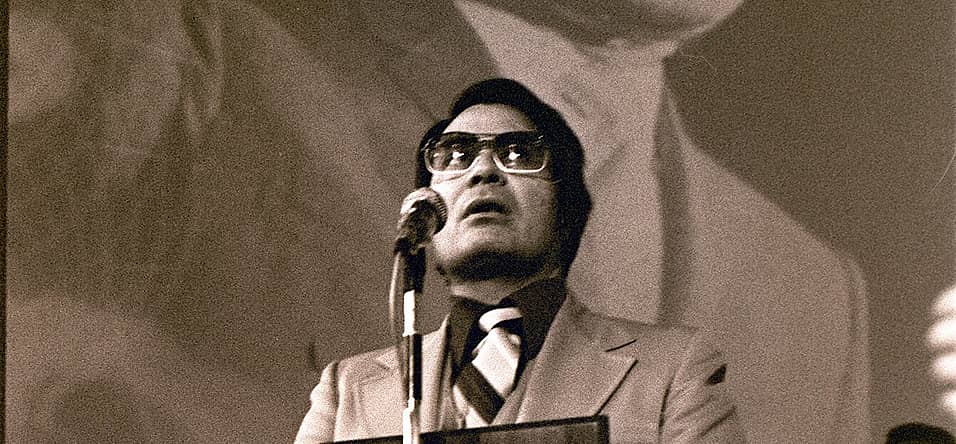
Jim Jones' birthday
Jim Jones, born May 13, 1931, led a life marked by extreme contrasts. He started as a charismatic church leader, founding the Peoples Temple. However, his story took a dark turn, leading to the tragic Jonestown massacre in 1978.
Jones’s journey from a respected figure to a notorious one is complex and compelling. His actions had a lasting impact, making his life a subject of study and caution.
Early Life of Jim Jones
Jim Jones was born in a small Indiana town. Growing up during the Great Depression deeply affected him, and he often felt like an outsider, struggling to fit in. Jones found solace in religion and was drawn to the church early on.
His education was a mix of public school and intense religious studies. Jones was smart but he also had a rebellious side. He questioned things and showed a keen interest in social issues. This blend of intelligence and curiosity marked his early years.
Jones’s fascination with religion grew as he aged. He spent many hours in church, absorbing various teachings. These experiences shaped his thinking and future path. His journey from a curious child to a religious leader started here, in his Indiana hometown.
Jim Jones: From Charisma to Tragedy
Jim Jones’ path in life was both remarkable and alarming. In the 1950s, he became a preacher known for his captivating speeches.
He founded the Peoples Temple, a group promoting racial equality, which was uncommon then. Jones gained respect for integrating churches and helping the needy. He was a man of vision, but his methods were often questionable.
In the 1960s, Jones’ influence grew. He moved the Peoples Temple to California, attracting more followers. His message of social change was powerful. However, behind the scenes, things were darker. Reports of abuse and financial exploitation began to surface. Jones’ control over his followers became more rigid and manipulative.
By the mid-1970s, Jones faced increasing criticism. He relocated his congregation to Guyana, in South America, to escape scrutiny.
Here, he established Jonestown, a remote settlement. Life in Jonestown was harsh. Followers were isolated and subjected to Jones’ increasingly erratic behavior.
The tragedy unfolded on November 18, 1978. Under Jones’ direction, over 900 people, including children, died in a mass suicide-murder. This event shocked the world and left a scar in history.
Jones’ life, which began with promises of equality and aid, ended in one of the most horrific events of the 20th century. His story remains a cautionary tale about the dangers of blind allegiance and unchecked power.
Intriguing Facts About Jim Jones
Early Fascination with Religion: As a child, Jim Jones was deeply fascinated by religious rituals and often conducted funerals for small animals.
Communist Ideals: Jones was influenced by communist ideals in his youth, seeing them as a way to combat racial and class inequality.
Adoption Advocate: Jones and his wife, Marceline, were strong adoption advocates. They adopted several children of different racial backgrounds, creating what Jones called a “rainbow family.”
Faith Healing: In his sermons, Jones claimed to perform faith healings, which attracted many to his congregation.
Political Ties: Jones had significant political influence in San Francisco, often using his congregation to sway elections.
Soviet Union Interest: At one point, Jones considered relocating his congregation to the Soviet Union, attracted by its communist ideology.
FBI Investigations: Jones became the subject of FBI investigations due to his alleged threats against the U.S. government and claims of human rights abuses within the Peoples Temple.




